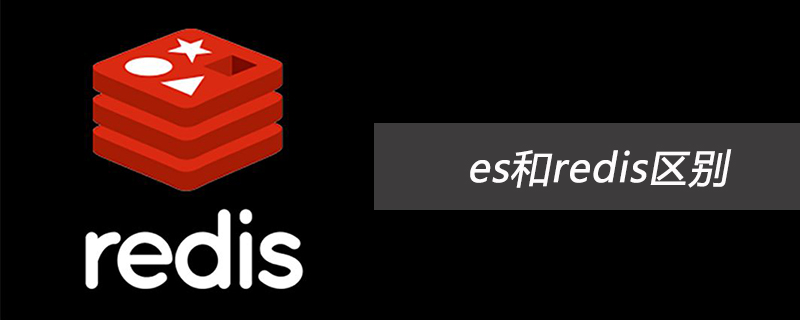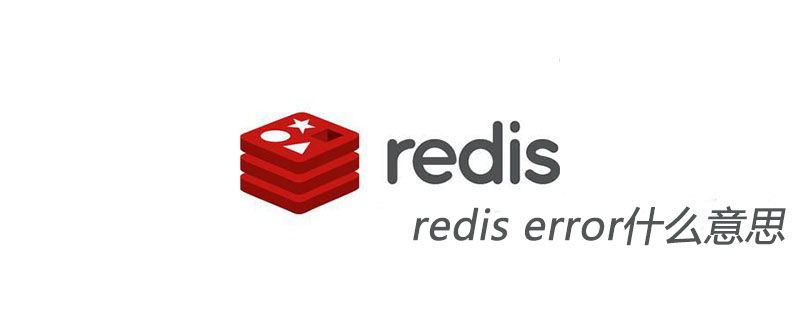Practical application of Redis under large-scale concurrency
With the continuous development of Internet technology, there are more and more large-scale concurrency application scenarios. In these application scenarios, caching technology is an indispensable part. As a high-performance open source caching system, Redis is used by more and more enterprises.
However, Redis will also face some challenges when facing large-scale concurrency. This article will introduce some practical experience of Redis application under large-scale concurrency, hoping to provide some useful reference for readers.
- Configuration Optimization
The default configuration of Redis is not necessarily suitable for all application scenarios, so some configuration optimization is required in actual use. The following points require special attention:
- Selection of the maxmemory-policy option: This option is used to specify what policy should be used to clean the cache when the memory exceeds the limit. Different application scenarios may require the use of different strategies, such as least recently used (LRU), least visited (LFU), random (random), etc. Need to be adjusted according to actual situation.
- Setting of TCP parameters: In high concurrency situations, TCP parameters also need to be adjusted to better support concurrent connections. Parameters that require special attention include syncookies, tcp_tw_recycle, tcp_tw_reuse, etc.
- Redis persistence: In Redis, data can be persisted through RDB (snapshot) or AOF (append). It is necessary to choose the appropriate method according to the actual situation and configure it accordingly.
- Master-slave replication
In high concurrency scenarios, the performance of a single Redis instance may not meet the needs. At this time, you can consider using master-slave replication to distribute the load to multiple instances and implement failover. The following is some practical experience in master-slave replication:
- Time errors between different Redis instances may cause delays in data synchronization. You need to configure the NTP server to ensure time consistency between different instances.
- Master-slave replication also needs to consider network bandwidth, replication delay and other factors. It is recommended to conduct sufficient testing in the actual production environment and adjust parameters such as the replication interval according to the actual situation.
- When the main Redis goes down, you need to quickly switch from Redis to the main Redis. In actual implementation, tools such as Redis Sentinel can be used to achieve automatic switching and failure recovery.
- Selection of data structure
Redis supports a variety of different data structures, and different data structures have different advantages and disadvantages. When using Redis for caching, you need to select an appropriate data structure based on actual needs and perform corresponding optimization.
- String (string): suitable for storing smaller data and short-term cache.
- List (list): suitable for storing some larger data collections, such as queues, etc.
- Set: Suitable for storing non-duplicate data sets, supporting fast intersection, union and other operations.
- Ordered set (sorted set): Similar to a set, but you can specify a score for each element and support operations such as sorting by score.
- Hash table (hash): suitable for storing some structured data, such as a large amount of key-value data.
- Current limiting strategy
In high concurrency scenarios, a large number of requests accessing the cache system at the same time may cause system crashes or performance degradation. Therefore, some current limiting strategies need to be adopted to curb request concurrency.
The following are some commonly used current limiting strategies:
- Speed limiting: Adopt speed limiting strategies at the cache level, for example, by setting request frequency, traffic limit, etc.
- Distributed current limiting: Use gateways or scheduling systems to implement current limiting among multiple Redis nodes, effectively reducing the pressure on the cache system.
- Asynchronous processing: In scenarios where requests are slow, you can use an asynchronous processing solution, put the request in the queue, and process the request asynchronously to improve concurrency.
Summary
The actual application of Redis in large-scale concurrency scenarios needs to consider many factors, including configuration optimization, master-slave replication, data structure selection and current limiting strategy, etc. . It is necessary to select an appropriate solution based on the actual situation and conduct sufficient testing and optimization. I hope this article can provide readers with some useful practical experience and reference.
The above is the detailed content of Practical application of Redis under large-scale concurrency. For more information, please follow other related articles on the PHP Chinese website!
 es和redis区别Jul 06, 2019 pm 01:45 PM
es和redis区别Jul 06, 2019 pm 01:45 PMRedis是现在最热门的key-value数据库,Redis的最大特点是key-value存储所带来的简单和高性能;相较于MongoDB和Redis,晚一年发布的ES可能知名度要低一些,ES的特点是搜索,ES是围绕搜索设计的。
 一起来聊聊Redis有什么优势和特点May 16, 2022 pm 06:04 PM
一起来聊聊Redis有什么优势和特点May 16, 2022 pm 06:04 PM本篇文章给大家带来了关于redis的相关知识,其中主要介绍了关于redis的一些优势和特点,Redis 是一个开源的使用ANSI C语言编写、遵守 BSD 协议、支持网络、可基于内存、分布式存储数据库,下面一起来看一下,希望对大家有帮助。
 实例详解Redis Cluster集群收缩主从节点Apr 21, 2022 pm 06:23 PM
实例详解Redis Cluster集群收缩主从节点Apr 21, 2022 pm 06:23 PM本篇文章给大家带来了关于redis的相关知识,其中主要介绍了Redis Cluster集群收缩主从节点的相关问题,包括了Cluster集群收缩概念、将6390主节点从集群中收缩、验证数据迁移过程是否导致数据异常等,希望对大家有帮助。
 Redis实现排行榜及相同积分按时间排序功能的实现Aug 22, 2022 pm 05:51 PM
Redis实现排行榜及相同积分按时间排序功能的实现Aug 22, 2022 pm 05:51 PM本篇文章给大家带来了关于redis的相关知识,其中主要介绍了Redis实现排行榜及相同积分按时间排序,本文通过实例代码给大家介绍的非常详细,对大家的学习或工作具有一定的参考借鉴价值,希望对大家有帮助。
 详细解析Redis中命令的原子性Jun 01, 2022 am 11:58 AM
详细解析Redis中命令的原子性Jun 01, 2022 am 11:58 AM本篇文章给大家带来了关于redis的相关知识,其中主要介绍了关于原子操作中命令原子性的相关问题,包括了处理并发的方案、编程模型、多IO线程以及单命令的相关内容,下面一起看一下,希望对大家有帮助。
 一文搞懂redis的bitmapApr 27, 2022 pm 07:48 PM
一文搞懂redis的bitmapApr 27, 2022 pm 07:48 PM本篇文章给大家带来了关于redis的相关知识,其中主要介绍了bitmap问题,Redis 为我们提供了位图这一数据结构,位图数据结构其实并不是一个全新的玩意,我们可以简单的认为就是个数组,只是里面的内容只能为0或1而已,希望对大家有帮助。
 实例详解Redis实现排行榜及相同积分按时间排序功能的实现Aug 26, 2022 pm 02:09 PM
实例详解Redis实现排行榜及相同积分按时间排序功能的实现Aug 26, 2022 pm 02:09 PM本篇文章给大家带来了关于redis的相关知识,其中主要介绍了Redis实现排行榜及相同积分按时间排序,本文通过实例代码给大家介绍的非常详细,下面一起来看一下,希望对大家有帮助。
 redis error什么意思Jun 17, 2019 am 11:07 AM
redis error什么意思Jun 17, 2019 am 11:07 AMredis error就是redis数据库和其组合使用的部件出现错误,这个出现的错误有很多种,例如Redis被配置为保存数据库快照,但它不能持久化到硬盘,用来修改集合数据的命令不能用。


Hot AI Tools

Undresser.AI Undress
AI-powered app for creating realistic nude photos

AI Clothes Remover
Online AI tool for removing clothes from photos.

Undress AI Tool
Undress images for free

Clothoff.io
AI clothes remover

AI Hentai Generator
Generate AI Hentai for free.

Hot Article

Hot Tools

SublimeText3 English version
Recommended: Win version, supports code prompts!

MantisBT
Mantis is an easy-to-deploy web-based defect tracking tool designed to aid in product defect tracking. It requires PHP, MySQL and a web server. Check out our demo and hosting services.

mPDF
mPDF is a PHP library that can generate PDF files from UTF-8 encoded HTML. The original author, Ian Back, wrote mPDF to output PDF files "on the fly" from his website and handle different languages. It is slower than original scripts like HTML2FPDF and produces larger files when using Unicode fonts, but supports CSS styles etc. and has a lot of enhancements. Supports almost all languages, including RTL (Arabic and Hebrew) and CJK (Chinese, Japanese and Korean). Supports nested block-level elements (such as P, DIV),

SublimeText3 Mac version
God-level code editing software (SublimeText3)

SublimeText3 Linux new version
SublimeText3 Linux latest version





